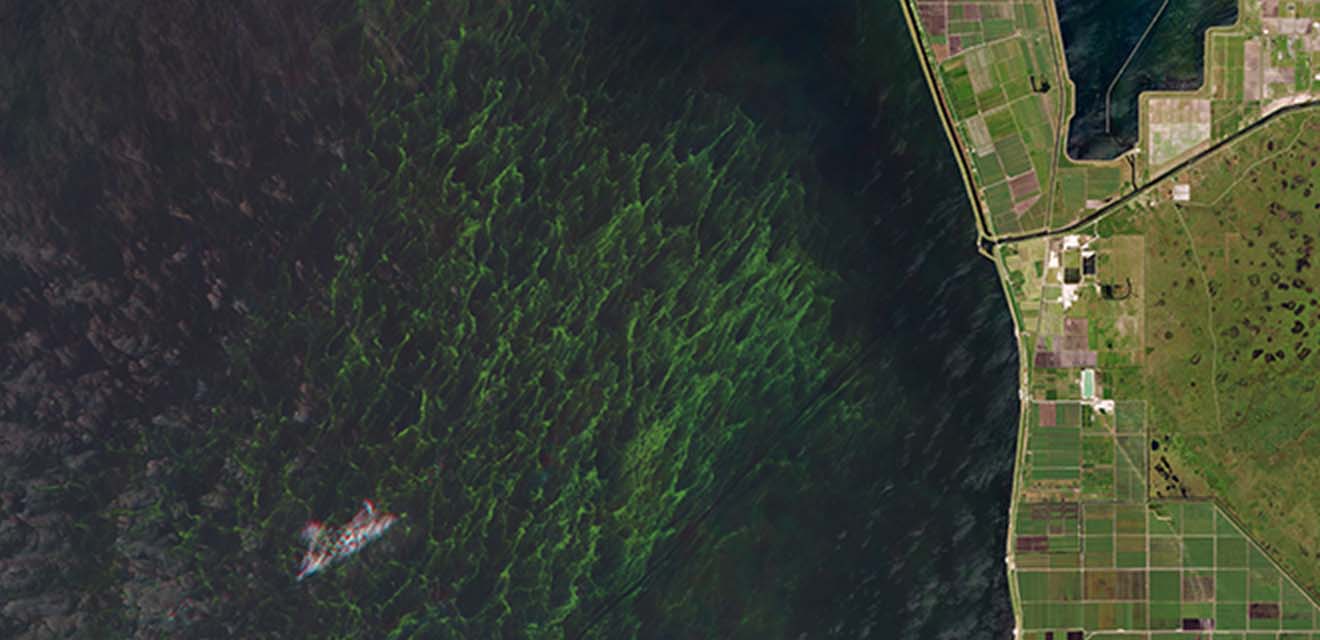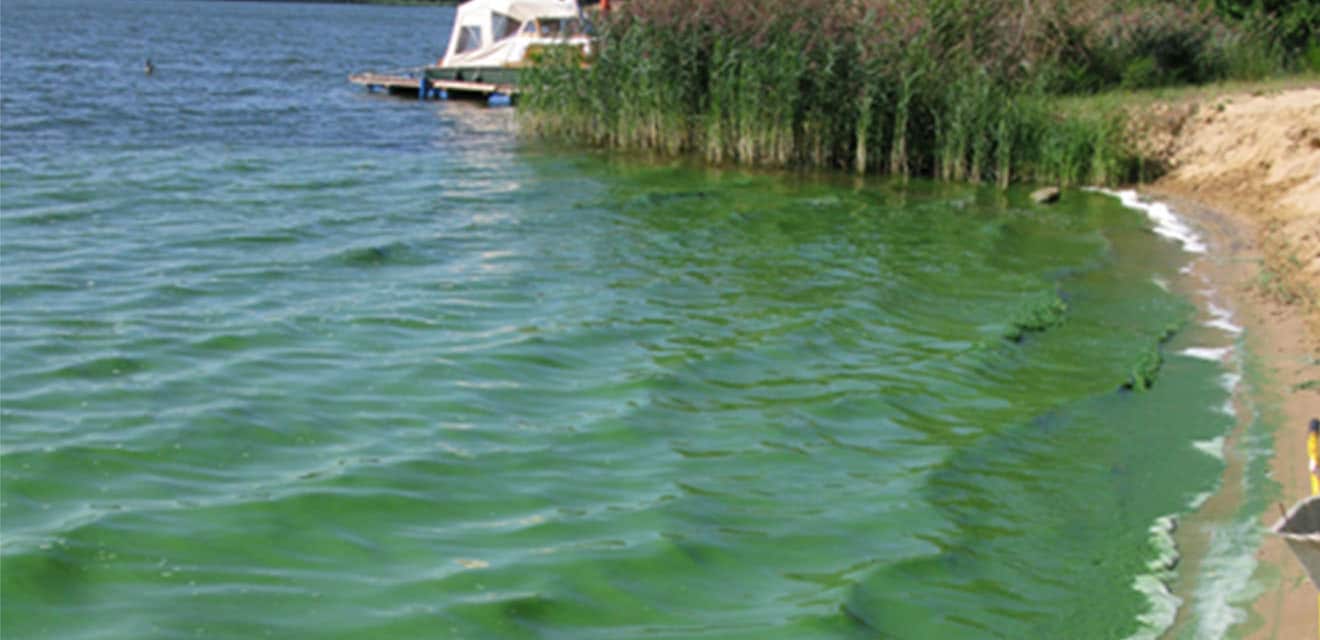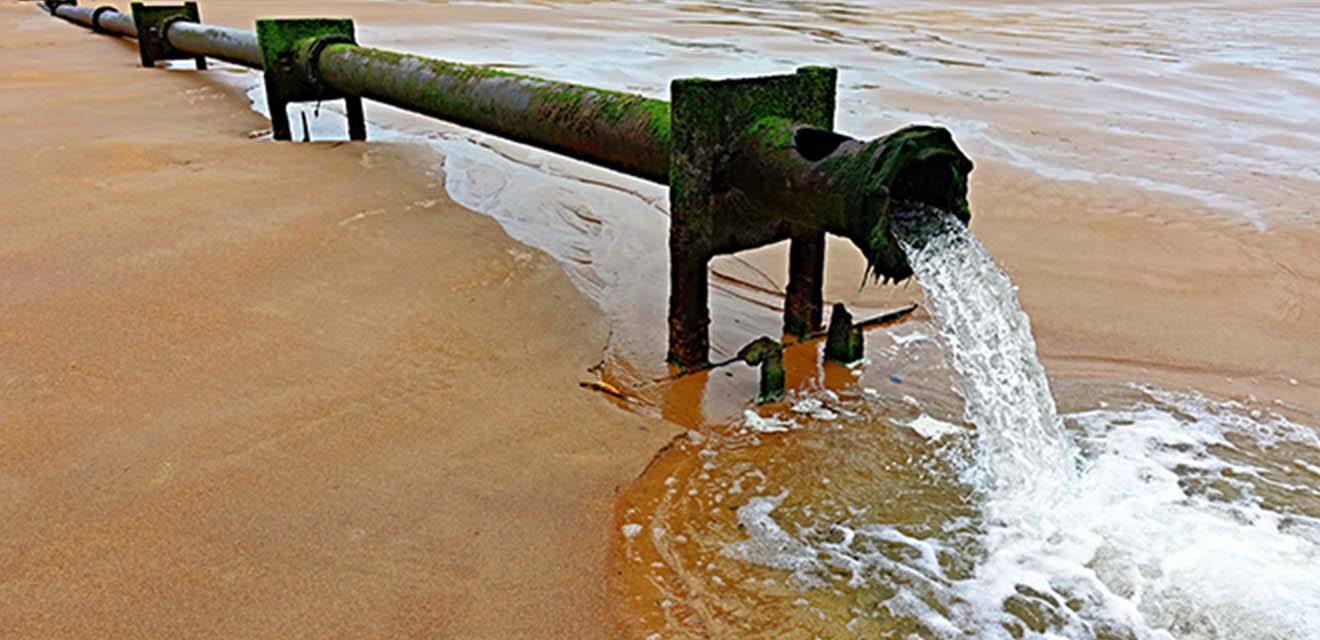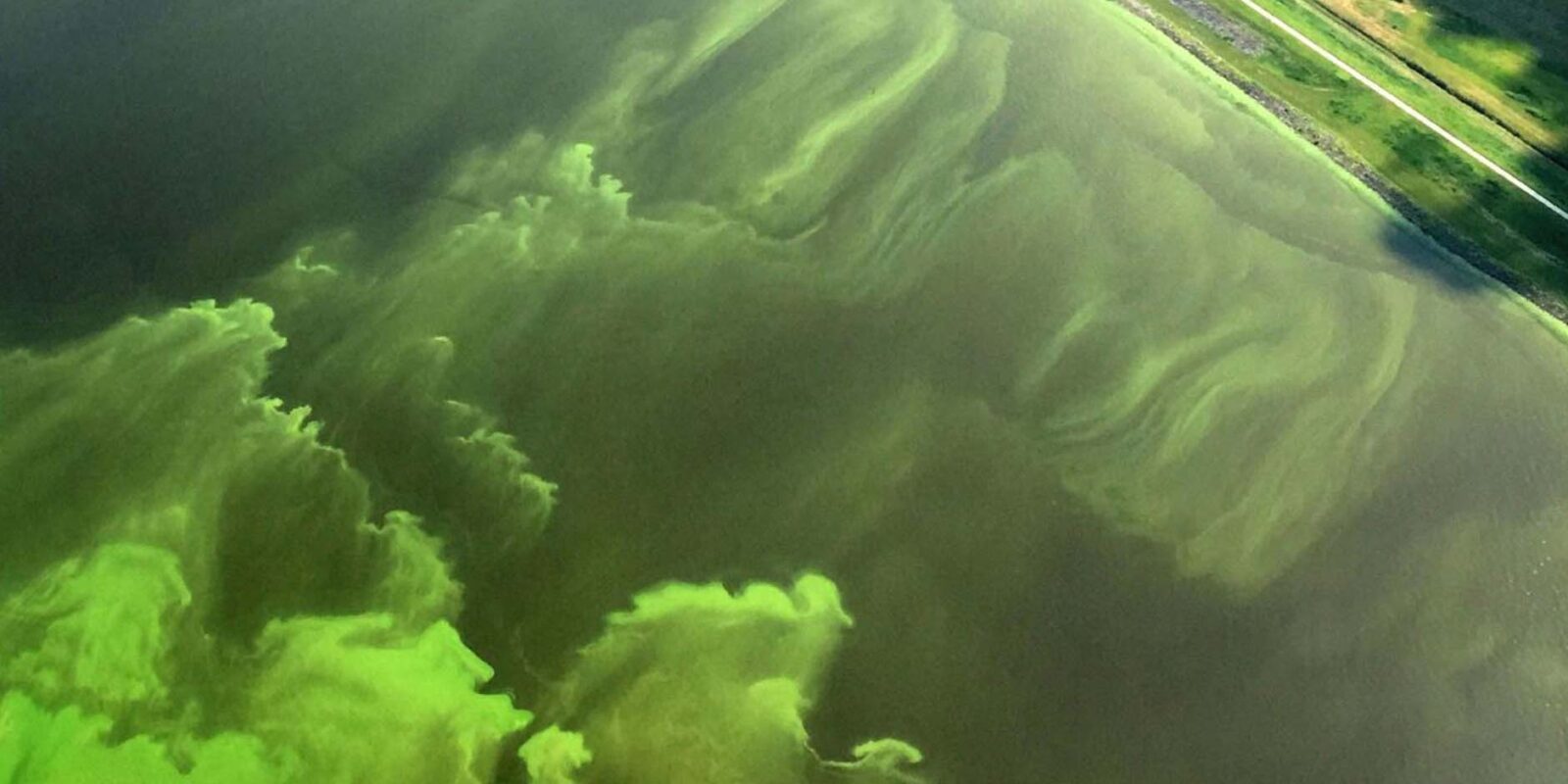In short
- When algae blooms occur in the wrong place, they cause major damage to the surrounding ecosystem;
- The bloom on Lake Okeechobee, FL, severely damaged the aquatic life, tourism, environment, humans and pets;
- Long-term thinking is required, as short-term fixes seem to be ineffective.

Algal blooms have been hitting the headlines with alarming regularity over recent years. The reason for this is simple: their effects can be devastating.
The Florida bloom is proving damaging in the US, with reports of fish kills along the coast, and residents forced to evacuate.
However, you may not know that algae blooms are occurring all over the US and spreading across its borders. They are causing major environmental and financial damage. Many of these situations could have been avoided — had preventative measures been put in place earlier.
Why are algal blooms in Lake Okeechobee?
A bloom is a rapid increase in the population of algae and is not always harmful. However, when a bloom occurs in the wrong place, it can cause major damage to the surrounding ecosystem.
A particular algal bloom has been spreading over parts of Florida for several months now and has recently stretched into Lake Okeechobee. The bloom had damaging effects on aquatic life, tourism, and the environment. It has also caused health issues in humans and pets.
This May, the National Oceanic and Atmospheric Administration’s satellite imagery showed a bloom of about 300 square miles (777 km²) on the lake.
As if this news weren’t concerning enough, a recent study found the algal toxin ATX in the air for the first time.

Now, Kim Popendorf, Ph.D., assistant professor at the Department of Ocean Sciences, Rosenstiel School of Marine and Atmospheric Science, advised people living in Florida to keep wearing medical face masks to avoid inhaling algae toxins.
“There’s some indication that inhalation impacts your body differently. It can be much more damaging because it can be a more direct route to your bloodstream, to your respiratory system,” she added.
Florida has a history of recurring blue-green algae blooms. Every year, nutrient runoff from agriculture and urban development causes algae to grow at an alarming rate.
The year 2018 has seen the most severe case of red tide (bloom occurring in coastal areas), stretching over 150 miles (241.4 km) – This event has killed thousands of marine life and threatened the tourism and fishing businesses.
Blooms can also appear in reservoirs, lakes, ponds, cooling ponds, slow-moving rivers, and so on – where water is stagnant, and the climate conditions are right.
This situation in lake Okeechobee clearly indicates how serious algal blooms can become. It shows they’re not a periodical phenomenon but a recurring event—and it’s happening all over the globe.
Another example is Argentina’s San Roque lake, where the damage caused by algae blooms has increased in severity over the years.
Harmful blooms in Lake San Roque: An emerging environmental disaster
The San Roque Reservoir in Córdoba, Argentina, has a surface area of 16 km² (6.2 sq mi) and an average depth of 16 m (52 ft). It’s an essential source of water used for domestic, industrial, and irrigation purposes.
Approximately 70% of the drinking water consumed by the inhabitants of Córdoba comes from the San Roque dam.
Algal blooms in Lake San Roque are a perfect example of what the next decade holds for freshwater bodies globally: ever-increasing pollution from agricultural runoff and untreated human waste, causing eutrophication — an increase in water nutrients that causes an explosion in algae growth and plant life.
Algae blooms have hit lake San Roque for decades. Since October 2013, algae have been steadily increasing in volume and spreading throughout the lake.

In December 2018, images of dead fish floating on San Roque’s green waters worried residents and local authorities. The algae proliferation was fueled by nutrients from untreated sewage effluents and soil containing pesticides and fertilizers. Combined with high temperatures, it encouraged the blooms to persist.
In the past years, the problem kept reappearing. Attempts to extract the algae from Lake San Roque were futile as the problem persisted.
As the climate changes and temperatures increase, algae growth is set to accelerate in the region — and the question is, how can we stop them?
What can you do to avoid an algal bloom?
While there is no one solution to the issue, things can be done to help. Long-term thinking is required, as short-term fixes seem ineffective.
Learn how to prevent excessive algae and also how to minimize the damage when a bloom occurs.
How? Monitoring water quality parameters in real-time, receiving alerts when they change, and acting on that information.
Use technology that can monitor, predict, and control harmful algal blooms in real-time.
As the prediction model becomes increasingly accurate over time, you’ll be able to ensure you and your business are not surprised by this potentially devastating problem.
